Text


Happy #worldwhaleday! 🐋


Let's celebrate it by enjoying the outstanding surface sequence of a Sei whale (Balaenoptera borealis).
Did you know they are actually the third-largest animal, right after Blue whales and Fin whales? They are incredible giants, that sometimes pass by the Azores in their migrations.
#whales#whaleday#worldwhaleday#cetaceans#marinemammals#marineanimals#marinelife#oceanlife#ocean#atlanticocean#azores#saomiguel#whalewatching#research#conservation#animalphotography#wildlifephotography
10 notes
·
View notes
Text
Dolphin in black and white
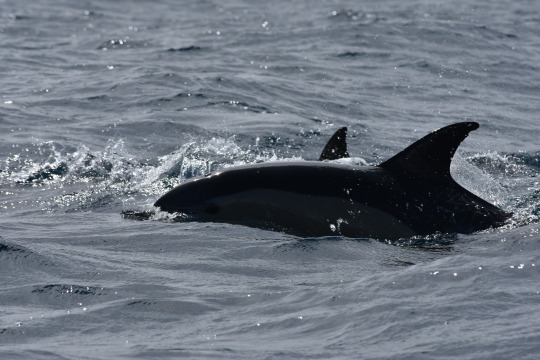
When the sun is high and bright, and when the animals are in backlight, this may be the result. A natural black and white photo.
A fascinating result of the interaction of the sunlight with the sea surface and the body of the animal.
#dolphin#commondolphin#cetaceans#marine mammals#marine animals#marine life#ocean animals#ocean life#ocean#sea#conservation#research#whale watching#photography#nature photography#wildlife photography#ocean photography#my photography#original photo#original content
8 notes
·
View notes
Text
Common dolphin surface sequence
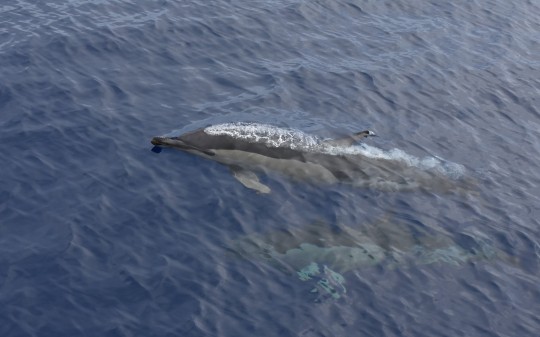

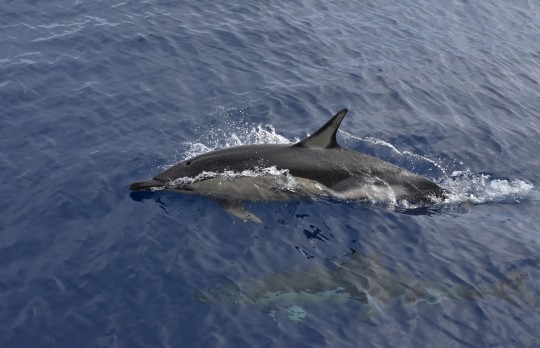

Even the simplest thing can be a surprisingly subject.
Dolphins repeat this sequence continuously while they travel, and it's just incredibly cool to see them.
#common dolphin#dolphins#cetaceans#marine animals#marine mammals#marine life#sea life#marine biology#conservation#research#whale watching#ocean life#ocean#atlantic ocean#azores#sao miguel
15 notes
·
View notes
Text
#OceanFact n. 4
The unique blowhole of a sperm whale.

Sperm whales are fascinating, mysterious animals. They are the animals of records (biggest brain, the loudest biological sound, the most pronounced sexual dimorphism) and no other animal looks like them. But probably the most unique feature is their big head. And their blowhole. It's the only species to have the nostril on the left tip of the head, and this makes their blow unique! It can be seen from very far away and recognised, as it can be 5 m high, and always oblique on the front, forming 45° with the horizontal line.
The more you know of them, the more you want to know. And saw them free in the ocean was a spectacular, amazing opportunity that I will always carry with me.
#sperm whales#whales#cetaceans#marine mammals#marine animals#marine life#sea life#sea animals#sea creatures#ocean life#ocean love#ocean photography#atlantic ocean#north atlantic ocean#sao miguel#azores#whale watching#research#nature photography#wildlife photography#animal photography
2 notes
·
View notes
Text
#BadOceanComics
Get ready, the aliens are among us!

These two sperm whales are acting weirdly. What Carl does have onto its head? And why George is wearing a helmet?
Well, because the aliens are among them!
Researchers use those devices, called DTAGs (better shaped in reality, as you may see below). They are equipped with different sensors, including one or more hydrophones, to record the animals' vocalizations. Basically, they are listening to them and discovering interesting facts about their biology and ecology.

This is also part of my career path, as I am shaping my experiences within the bioacoustic world of cetaceans. Of course, it's not possible to really know what they are saying each other, but within decades, researchers managed to find some categories of sounds and associates them with particular behaviours. Thanks to these devices, it has been discovered that the huge head of a sperm whales is used for sound production and how it works (Madsen, P. T. (2002). Sperm Whale Sound Production.). They produce a variety of sounds, including echolocation clicks to feed in the deep ocean, and codas for social communication.
Isn't it so fascinating? For me, this world is irresistible. I found myself always so curious and full of questions. Of course, in particular of sperm whales.
They better protect their brains with helmets, aliens are listening to them!
#sperm whale#whales#cetaceans#marine mammals#marine animals#marine life#sea creatures#sea life#deep sea#marine biology#marine sciences#research#bioacoustics#acoustic#underwater sound#underwater#BadOceanComics
29 notes
·
View notes
Text
Bottlenose dolphins travelling

Bottlenose dolphins (Tursiops truncatus) are the most common dolphin in the people imaginary. They are the ones that you'll see in the aquariums, as they are an easy species to grow in captivity.
They are easy to recognise, as they possess a prominent melon, that you can see from the shape of the head. Their colour is of shades of greys, so they don't have a particular pattern. They are also huge: bigger males can be 4 m x 650 kg! So, you'll certainly recognise them if you see them.
Ph: Cristina Marcolin
#tursiops#bottlenosedolphins#dolphins#cetaceans#marinemammals#marineanimals#marinelife#oceanlife#atlanticocean#ocean#azores#saomiguel#conservation#research#education#naturephotography#animalphotography#wildlifephotography#photography#nikon#nikond3400#nikonphotography#my photography#original content#originalphoto
1 note
·
View note
Text
#OceanFact n. 3
Carbon dioxide and Oxygen in the ocean are extremely different from the atmosphere.

The reason is defined by Henry's law, which sees the amount of gas dissolved in a liquid depending on its pressure, temperature and salinity of the liquid. With the increase in pressure and the decrease in temperature and salinity, the solubility of a gas increases. The solubility also depends on the properties of the gas itself.
The inorganic cycle of CO2 in water is of extreme importance, as it regulates the carbonate cycle. Calcium carbonate is the main element that constitutes the shell of many small organisms of the zooplankton (if you like, the cycle is illustrated in the picture above).
The oxygen present in seawater is lower than in the atmosphere (approximately 6%), while CO2 is much higher, with values of 0.04% in the air and 84% in the sea.
These data are essential for understanding the functioning of the marine ecosystem. In fact, erroneously from what is commonly thought, it is the phytoplankton present in the sea that produces the majority of the oxygen present. In fact, it is estimated that about 70% of oxygen is produced by phytoplankton. However, the percentage is highly variable, due to the difficulty of obtaining a single long-term data, as the quantities of phytoplankton and the consequent oxygen produced vary greatly throughout the year. Another fact of particular interest is that the oceans, thanks to the high solubilization capacity of CO2, have been able to store about 40% of the CO2 produced by man in the last 200 years.
References
5.4 Dissolved Gases: Oxygen – Introduction to Oceanography (pressbooks.pub)
Manuale Fitoplancton e Macroinvertebrati Bentonici_ISPRA
Sekerci, Y., & Petrovskii, S. (2015). Mathematical modelling of plankton–oxygen dynamics under the climate change. Bulletin of mathematical biology, 77(12), 2325-2353. https://doi.org/10.1007/s11538-015-0126-0
#marine biology#marinelife#marine photography#sea life#exploring underwater#OceanFact#ocean facts#ocean#conservation#education
3 notes
·
View notes
Text
Common dolphins private moments
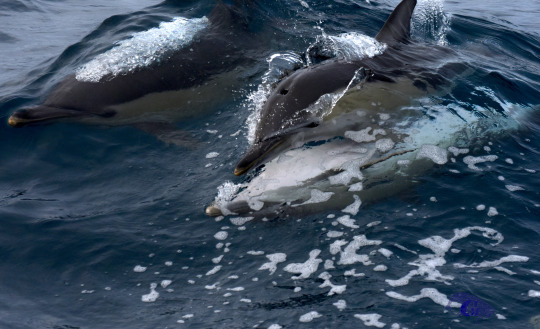
Common dolphins (Delphinus delphis) are, like other dolphins, extremely social animals. And for this reason, they tend to have sex within the same pod all year round, to strengthen their bonds. This means they will copulate with individuals of the same gender, altogether, many times and at different moments. It seems that they do it also just for pleasure. It's so not uncommon to spot them while having sex under the surface.
#commondolphins#dolphins#cetaceans#marinemammals#marineanimals#marinebiology#ocean#sea#sea life#animalphotography#wildlifephotography#oceanphotography#atlanticocean
0 notes
Text
#BadOceanComics
Bottlenose dolphins are crazy: the Christmas party is here (adult content)
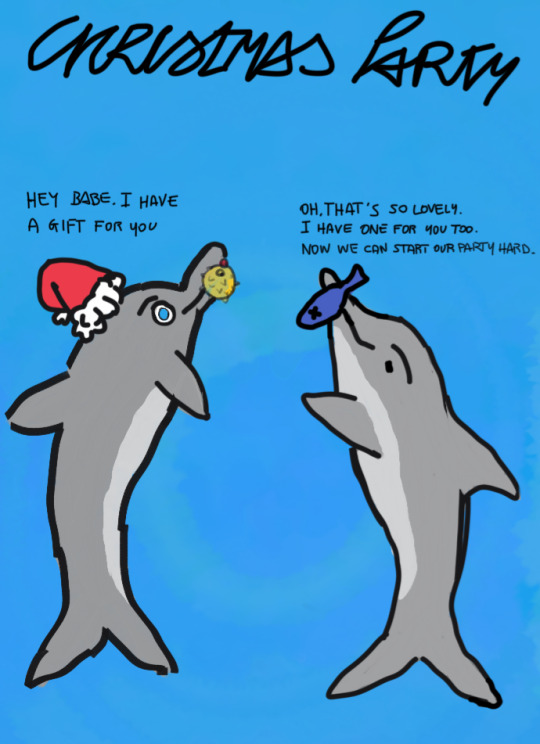
Bottlenose dolphins (Tursiops truncatus) can be considered perverts and one of the craziest creatures in the ocean.
Usually, they are the image of what's a dolphin in the common vision of people. They are cute, lovely animals you can find in aquariums, playing, jumping, and entertaining the public. They are the clowns (in a nice way) of the sea.
But the reality is never as expected. Reality is cruel. Reality is much worse than what we can think of.
In fact, bottlenose dolphins have been discovered to be drug-addicted. Actually, not all populations share the same vices but it has been reported multiple times. Different individuals have been caught playing with puffer fishes to get high on purpose. Indeed, pufferfishes are part of the family Tetraodontidae, in which the members share the possession of a highly poisonous toxin, the tetrodotoxin. See the funny footage from the BBC below.
youtube
But this is not the only weird behaviour they can adopt. Bottlenose dolphins have been reported using different objects and animals, including dead fish and decapitated fish, as a way of giving pleasure to themselves. This applies to both males and females, the latter discovered recently to have also a functional clitoris just as humans do.
______________________________
References
Brennan, P. L., Cowart, J. R., & Orbach, D. N. (2022). Evidence of a functional clitoris in dolphins. Current Biology, 32(1), R24-R26.
Muraco, H., & Kuczaj, S. A. (2015). II.(2015). Conceptive estrus behavior in three bottlenose dolphins (Tursiops truncatus). Animal Behavior and Cognition, 2(1), 30-48.
#bottlenosedolphin#dolphin#cetaceans#marineanimals#marinemammals#marinebiology#dolphins#ocean#research#marine science#ocean facts#BadOceanComics#things you didn't want to know#sea#sea life
13 notes
·
View notes
Text
#OceanMyths n.1
Whales and dolphins are fishes.
𝙒𝙝𝙖𝙡𝙚𝙨 𝙖𝙣𝙙 𝙙𝙤𝙡𝙥𝙝𝙞𝙣𝙨 𝙖𝙧𝙚 𝙢𝙖𝙢𝙢𝙖𝙡𝙨.
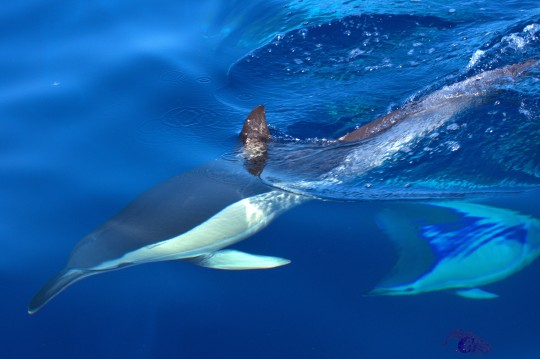
Have you ever thought of whales and dolphins are fishes? Or did you know they are actually marine mammals? This is quite a common mistake, a myth that has still to be debunked.
Whales and dolphins have lungs and need to breathe at the surface regularly (depending on the species). Unlike us, they need to remember to breathe. This is one of the reasons why they don't sleep in the same way as we do: only one hemisphere of the brain gets rested at a time.

Like other mammals, they breastfeed their babies and possess nipples. Their milk is highly fatty so that calves can grow fast in such a cold and dangerous environment. Although, they need to protect their sensitive parts, like the nipples, vagina and penis inside slits.
Unlike many mammals, they don't have any more hair on their body surface. However, calves may present some hair when that they will lose while growing.

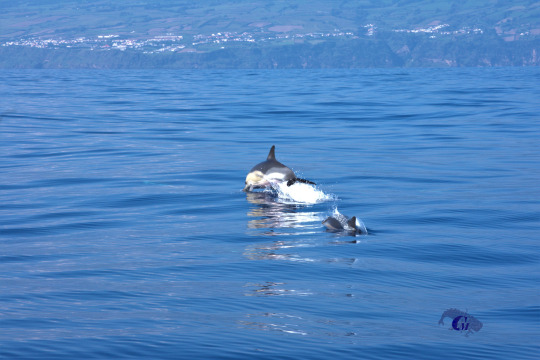


𝗥𝗲𝗳𝗲𝗿𝗲𝗻𝗰𝗲𝘀
Mead, J. G. (2022, September 23). cetacean. Encyclopedia Britannica. https://www.britannica.com/animal/cetacean
Thewissen, J. G. M., Cooper, L. N., George, J. C., & Bajpai, S. (2009). From land to water: the origin of whales, dolphins, and porpoises. Evolution: Education and Outreach, 2(2), 272-288.
Wursig, B., Perrin, W. F. and Kovacs, K. M. (Eds.). (2017). Encyclopedia of marine mammals. Academic Press.
#cetaceans#marine animals#marine mammals#marine biology#ocean#conservation#research#education#marine sciences#whales facts#whales#dolphins#ocean life#ocean love#atlantic ocean#original content#my photography#original photo#ocean photography#oceanpic#ocean pictures#nature photography#wildlife photography#ocean myths#ocean secrets
6 notes
·
View notes
Text
Common dolphins enjoying a ride!

Common dolphins (Delphinus delphis) are usually found in big groups (called pods), from hundreds up to thousands of individuals.
They are highly active and they frequently interact with boats. For these reasons, they are a beautiful subject for incredible and unique captures. They always gift with wonderful shots and it's an immense pleasure to see them jumping, swimming fast, rotating underwater, and breaching the surface. They are a small species of cetaceans but are easily spotted from a distance because of their active and social nature.
#commondolphins#dolphins#cetaceans#marinemammals#marineanimals#marinelife#oceanlife#atlanticocean#ocean#azores#saomiguel#conservation#research#education#naturephotography#animalphotography#wildlifephotography#photography#nikon#nikond3400#nikonphotography#my photography#original content#originalphoto
0 notes
Text
#OceanFact n.2
𝐓𝐡�� 𝐜𝐨𝐦𝐦𝐨𝐧 𝘗𝘰𝘴𝘪𝘥𝘰𝘯𝘪𝘢 𝘰𝘤𝘦𝘢𝘯𝘪𝘤𝘢 𝐢𝐬 𝐚 𝐦𝐚𝐫𝐢𝐧𝐞 𝐩𝐥𝐚𝐧𝐭!
Have you ever seen this plant washed up on a beach or underwater?
If you are from the Mediterranean region, most probably yes. But you might have thought it was an alga. Especially because not many people know that there are marine plants. They are called marine phanerogams or seagrasses and is possible to find them worldwide, with around 72 species recognised.
A curious fact about these plants is that they evolved back from land plants and not viceversa!
𝘗𝘰𝘴𝘪𝘥𝘰𝘯𝘪𝘢 𝘰𝘤𝘦𝘢𝘯𝘪𝘤𝘢 is an endemic species of the Mediterranean and is mostly disappeared, still living in a few small patches.
𝗥𝗲𝗳𝗲𝗿𝗲𝗻𝗰𝗲𝘀
Papenbrock, J. (2012). Highlights in seagrasses’ phylogeny, physiology, and metabolism: what makes them special?. International Scholarly Research Notices, 2012. https://doi.org/10.5402/2012/103892
Reynolds (2018) Seagrasses and seabeds: Introduction. Smithsonian Ocean Portal. Seagrass and Seagrass Beds | Smithsonian Ocean (si.edu)
Above, a short clip from my video of Levanto underwater, Liguria (Italy). You can find the full video on my youtube channel below.
youtube
#marine plants#plants#posidoniaoceanica#underwater#marine biology#marinelife#marine photography#sea life#exploring underwater#OceanFact#ocean facts#Youtube
1 note
·
View note
Text

Riding the waves
Enjoy this playful common dolphin (Delphinus delphis) riding the waves. Take also some moments to appreciate the beautiful reflection.
It is really common to see dolphins surfing the waves, taking advantage of them to speed up using less energy.
Ph: Cristina Marcolin
#common dolphin#dolphins#cetaceans#marinemammals#marine animals#marine life#ocean#oceanlife#atlantic ocean#research#education#conservation#photography#nature photography#cetaceanphotography#motion#my photography#original content
17 notes
·
View notes
Text
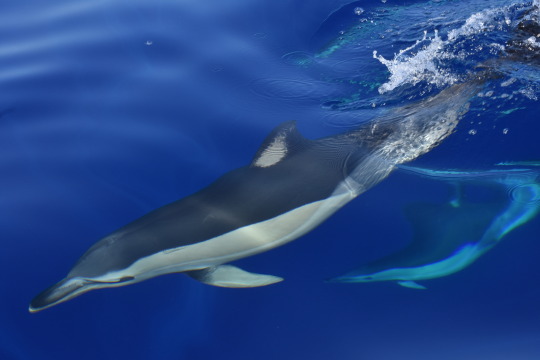
Common dolphin breaking the surface.
Capturing a moment.
Memories that will last forever.
Ph: Cristina Marcolin
#commondolphin#dolphin#cetaceans#marinemammals#marineanimals#oceanlife#ocean#atlanticocean#azores#oceanphotography#animalphotography#marinebiology#marinebiologist#conservation#research#oceanlove#originalphoto#my photography#nikon#nikond3400
1 note
·
View note
Text
#OceanFact n. 1
𝗭𝗼𝗼𝗽𝗹𝗮𝗻𝗸𝘁𝗼𝗻 𝗺𝗮𝗸𝗲𝘀 𝗱𝗮𝗶𝗹𝘆 𝗺𝗶𝗴𝗿𝗮𝘁𝗶𝗼𝗻𝘀 𝗳𝗿𝗼𝗺 𝘁𝗵𝗲 𝗱𝗲𝗲𝗽 𝘄𝗮𝘁𝗲𝗿𝘀 𝘁𝗼 𝘁𝗵𝗲 𝘀𝘂𝗿𝗳𝗮𝗰𝗲.

Zooplankton, the tiny crustaceans at the base of the food web, makes the so-called "Diel Vertical Migrations" (DVM). Usually, they tend to change depth during the day: during nighttime, they tend to be at the surface, while during the day they stay at greater depths.
This behaviour has been described first in the 19th century (Cuvier, 1817; Schmidtlein, 1879), both in freshwater lakes and in the oceans. Researchers noticed the difference in abundance of the zooplankton from day to night.
The such complex practice has so been studied for almost 200 years.
Different types of vertical migrations have been described, with different periodicities (daily, seasonals) areas of occurrence and biological significance. Although great variability exists, two of the main reasons attributed to this behaviour are the avoidance of predators that mainly rely on vision (by staying in deeper waters during the day) and the advantage of a high concentration of food at the surface (by migrating to the surface during nighttime).
The evolution of these behaviours for a simple group of species forced other levels in the food web to evolve a similar pattern. This phenomenon is called coevolution. In this way, predators learnt to make the same migrations to feed on the high densities of zooplankton.
________________________
𝗥𝗲𝗳𝗲𝗿𝗲𝗻𝗰𝗲𝘀 𝐚𝐧𝐝 𝐬𝘂𝗽𝗽𝗹𝗲𝗺𝗲𝗻𝘁𝗮𝗿𝘆 𝗺𝗮𝘁𝗲𝗿𝗶𝗮𝗹:
Bandara, K., Varpe, Ø., Wijewardene, L., Tverberg, V., & Eiane, K. (2021). Two hundred years of zooplankton vertical migration research. Biological Reviews, 96(4), 1547-1589. https://doi.org/10.1111/brv.12715
Dodson, S. (1990). Predicting diel vertical migration of zooplankton. Limnology and Oceanography, 35(5), 1195-1200. https://doi.org/10.4319/lo.1990.35.5.1195
Hays, G. C. (2003). A review of the adaptive significance and ecosystem consequences of zooplankton diel vertical migrations. Migrations and dispersal of marine organisms, 163-170. extension://elhekieabhbkpmcefcoobjddigjcaadp/http://www.seaturtle.org/.../hays_Hydrobiologia2003.pdf
Natural World Facts (2022). The Great Vertical Migration.
youtube
Image representing the migrations from Bandara et al., 2021.
Video cut from "Natural World Facts (2022). The Great Vertical Migration". See the full video above for amazing facts!
#OceanFact#oceans#sea#marinelife#zooplankton#marineanimals#crustaceas#migrations#dielverticalmigrations#marinebiology#marinesciences#marinelifefacts#explore#education#communication#learn#Youtube
1 note
·
View note
Text
How big is a sperm whale?

There are many ways to find out their size.
For example, diving with them and using a really long meter (not recommended, it can be really hard!).
In a more scientific way, you can actually measure stranded animals. This is a highly precise method. Unfortunately, stranding events can happen. On the 20th of September, 14 individuals stranded on King Island, near Australia. Necroscopies and many analyses will be conducted.
With living animals, other cool stuff can be done. Have you ever thought that you can measure them from photographs? Well, you can do it! It's called photogrammetry and it's a matter of comparison between the animal and a predefined measure, usually the distance between two lasers.
And there's a truly amazing methodology that you probably don't know: measuring them from their clicks! Indeed sperm whale's produce a large variety of sounds, including clicks. These are really short sounds, broadband (in frequency) and highly intese (currently, the most intense! They can almost kill a human, but no such events have been reported). They can produce these sounds thanks to a complex, unique to this species, nasal apparatus (consisting also of the spermaceti organ). You can see a representation in the second picture (Caruso et al., 2015). Amazing right? Dotted lines represent the way this sounds travel through the organ. All this complex mechanism leads to the emission of the sound infront of their head, consisting of different pulses due to the sound reflection in the air sacs. Actually, the time distance (delay) between two subsequent pulses can be related to the size of the spermaceti organ, so of the head and finally of the lenght of the animal. Isn't it so cool? So, just recording their sounds, when they echolocate (when they are searching for food) or when they socialize, can give us the opportunity to measure them.
This incredible discovery come from 1972 with Norris and Harvey. In all these years it developed incredibly, with new discoveries, new approaches (like automated ones, so helpful!) and many publications.
This was the core part of what I did for my Master thesis, with data collected in São Miguel Island, Azores. And also thanks to this work, now I am an intern at the Marine Bioacoustics Lab in Aarhus University, under the supervision of one of the greatest names in Bioacoustics and sperm whales' research.
Life can be really unexpected, right?
𝗥𝗲𝗳𝗲𝗿𝗲𝗻𝗰𝗲𝘀:
Caruso F, Sciacca V, Bellia G, De Domenico E, Larosa G, Papale E, et al. (2015) Size Distribution of Sperm
Whales Acoustically Identified during Long Term Deep-Sea Monitoring in the Ionian Sea. PLoS ONE 10(12): e0144503. https://doi.org/10.1371/journal.pone.0144503
Madsen, P. T., Payne, R., Kristiansen, N. U., Wahlberg, M., Kerr, I., & Møhl, B. (2002a). Sperm whale sound
production studied with ultrasound time/depth-recording tags. Journal of Experimental Biology, 205(13), 1899-
1906. https://doi.org/10.1242/jeb.205.13.1899
Marcolin, C. (2022). Sviluppo di un protocollo acustico a bordo di navi da whale watching per stimare la taglia di Capodogli a largo di São Miguel, Azzorre. Unige. https://unire.unige.it/handle/123456789/4252
Møhl, B. (2001). Sound transmission in the nose of the sperm whale Physeter catodon. A post mortem
study. Journal of Comparative Physiology A, 187(5), 335-340. https://doi.org/10.1007/s003590100205
Møhl, B., Wahlberg, M., Madsen, P. T., Miller, L. A., & Surlykke, A. (2000). Sperm whale clicks: Directionality and source level revisited. The journal of the Acoustical Society of America, 107(1), 638-648.
Norris, K. S. & Harvey, G. W. A theory for the function of the spermaceti organ of the sperm whale. NASA SP 262,
397–416 (1972). https://ntrs.nasa.gov/.../casi.ntrs.nasa.gov/19720017437.pdf
Whitehead, H. (2003). SPERM WHALES. Social Evolution in the Ocean. University of Chicago press. ISBN:
9780226895185
𝗦𝘂𝗽𝗽𝗹𝗲𝗺𝗲𝗻𝘁𝗮𝗿𝘆 𝗺𝗮𝘁𝗲𝗿𝗶𝗮𝗹 / 𝗔𝗽𝗽𝗿𝗼𝗳𝗼𝗻𝗱𝗶𝗺𝗲𝗻𝘁𝗶:
Madsen, P. T., Wahlberg, M. & Møhl, B. (2002b) Male sperm whale (Physeter macrocephalus) acoustics in a
high-latitude habitat: implications for echolocation and communication. Behav Ecol Sociobiol 53, 31–41.
Rhinelander, M. Q., & Dawson, S. M. (2004). Measuring sperm whales from their clicks: Stability of interpulse
intervals and validation that they indicate whale length. The Journal of the Acoustical Society of America, 115(4),
1826-1831. http://dx.doi.org/10.1121/1.1689346
Teloni, V., Zimmer, W. M., Wahlberg, M. and MADSEN, P. T. (2007). 127 Consistent acoustic size estimation
of sperm whales using clicks recorded from unknown aspects. J. Cetacean Res. Manage, 9(2), 127-136.
http://citeseerx.ist.psu.edu/viewdoc/download...
Watwood, S. L., Patrick J. O. Miller, Johnson, M., Madsen, P. T., & Tyack, P. L. (2006). Deep-Diving Foraging Behaviour
of Sperm Whales (Physeter macrocephalus). Journal of Animal Ecology, 75(3), 814–825.
http://www.jstor.org/stable/3838392
Wahlberg, M. (2002). The acoustic behaviour of diving sperm whales observed with a hydrophone array. Journal
of Experimental Marine Biology and Ecology, 281(1-2), 53-62. https://doi.org/10.1016/S0022-0981(02)00411-2
Ph: Cristina Marcolin.
Nasal apparathus representation (second image) adapted from Caruso F, Sciacca V, Bellia G, De Domenico E, Larosa G, Papale E, et al. (2015) Size Distribution of Sperm
Whales Acoustically Identified during Long Term Deep-Sea Monitoring in the Ionian Sea. PLoS ONE 10(12).
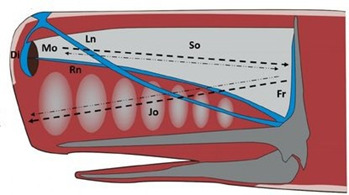

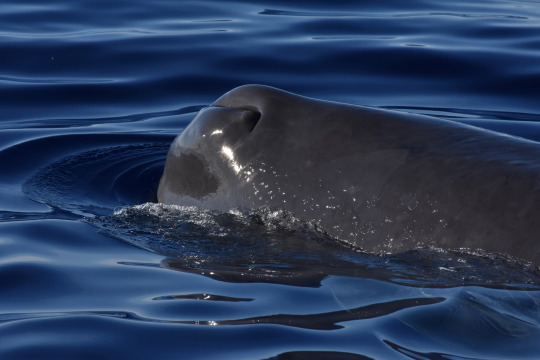
#spermwhale#cetaceans#marineanimals#marinemammals#ocean#marinebiology#oceanphotography#savethewhales#whales#animalphotography#conservation#research#bioacoustics
16 notes
·
View notes
Text
The 2022 Cachalote Consortium Workshop
On Saturday the 30th, the 2022 Cachalote Consortium Workshop was held! An amazing group of 60 researchers from around the world were virtually present.
During this workshop, many projects on sperm whales have been presented. Big names such as Hal Whitehead and Lisa Steiner were present too, introducing everyone to an important part of their work.

For me, it was a pleasure and an honour to attend this conference. It was my first one at Cachalote Consortium. And my first conference as a speaker. It was really satisfying to finally spread my work on sperm whales. And I found that my approach attracted other researchers, but also that others are trying to do the same in other parts of the world! It was a wonderful discovery.

With my work on data collected onboard the whale-watching vessels of Futurismo, I was able to estimate the sizes of sperm whales from their sound! A great tool for studies on populations of sperm whales. And acoustics methods are now more and more widespread in the conservation area.
With sperm whales, many studies can be conducted. And many sounds can be used! For size estimation, echolocation and coda clicks are used. And below, is an example of how a series of echolocation clicks "looks like". Amazing, right?
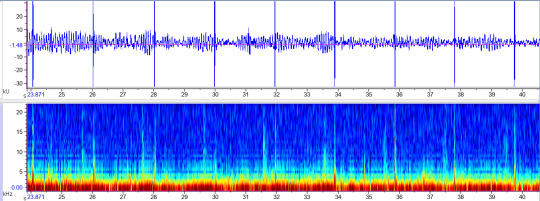
I will explain also what all of this means in a dedicated post. I feel the need to spread my work also to people not directly linked with research, because is so amazing and so interesting...that most people would be fascinated!
I am so glad I attended the 2022 Cachalote Consortium Workshop and I feel grateful to all the people out there doing so much hard work on sperm whales.
To finish, two nice pictures of sperm whales. Aren't they so cute?
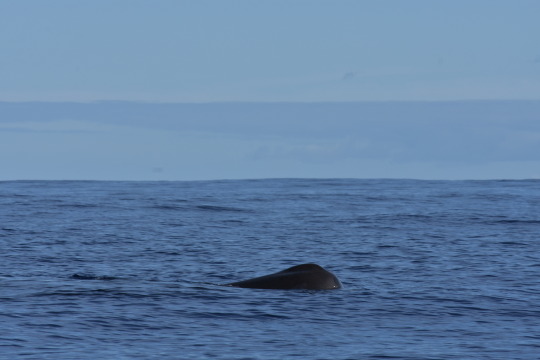

#spermwhale#cachalote#physetermacrocephalus#cetaceans#marinemammals#marineanimals#cachaloteconsortium#research#conservation#protect#acoustics#clicks#whalewatching#cetaceanphotography#animalphotography#nikon#azores#oceanphotography#marinebiology#ocean#whales#my photography#savethewhales
0 notes